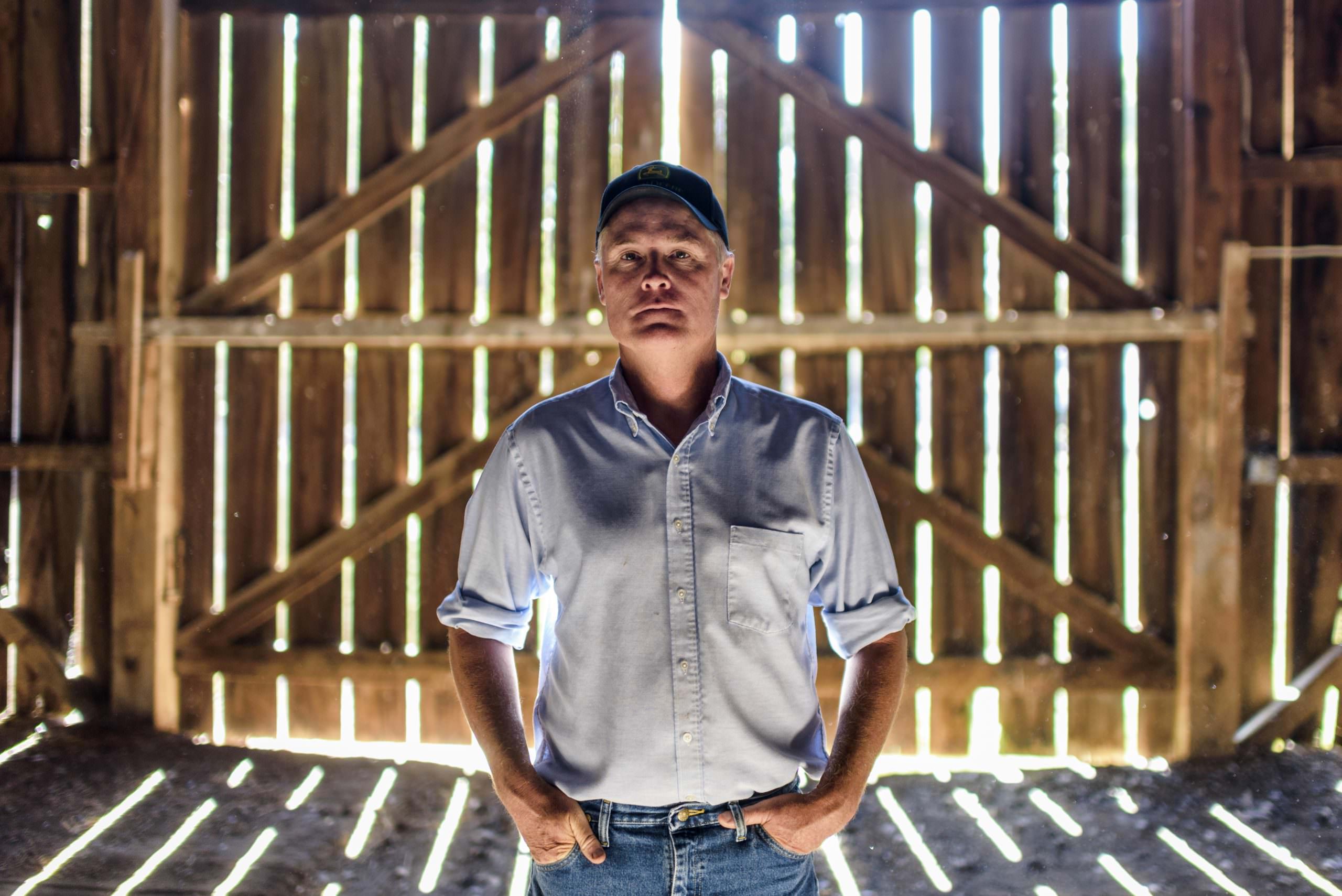Nevada ranchers and farmers honored for 100-year heritage
Years before Nevada was even a state, stalwart pioneers settled in the high desert and sagebrush valleys to eke out a living in this arid land. Even with the challenges of harsh weather and lack of water, many of them stayed, and their relatives have been rewarded in many ways.
One of these is through the Nevada Awards Program, which recognizes agricultural families who have owned and operated the same land for 100 years or more.
“Every ranch and farm has a unique story — some are as old as the state of Nevada, and many still have original structures standing from their starts,” says Jerri Conrad, Nevada Department of Agriculture interim director. “When a ranch or farm has been around this long, it’s always interesting to see everything they have done in Nevada, and for Nevada, in those 100 years. We are honored to share those legacies through this program.”
Since it started in 2004, 49 families have been honored and awarded with metal signs recognizing their longevity as Nevada centennial ranches or farms. This November, the next batch of centennial ranches and farms will be recognized at the Nevada Centennial Awards Program.
“Each of these families has contributed to Nevada’s agriculture and economy through continued dedication to their farms and ranches,” Conrad says. “Centennial farms and ranches have played roles in the histories of their communities and the passing of tradition through generations.”
In the stories to follow, we pay tribute to a small sampling of those farms and ranches that have survived through changing times, through climate, resource, and economic difficulties, to earn recognition as Nevada centennials.
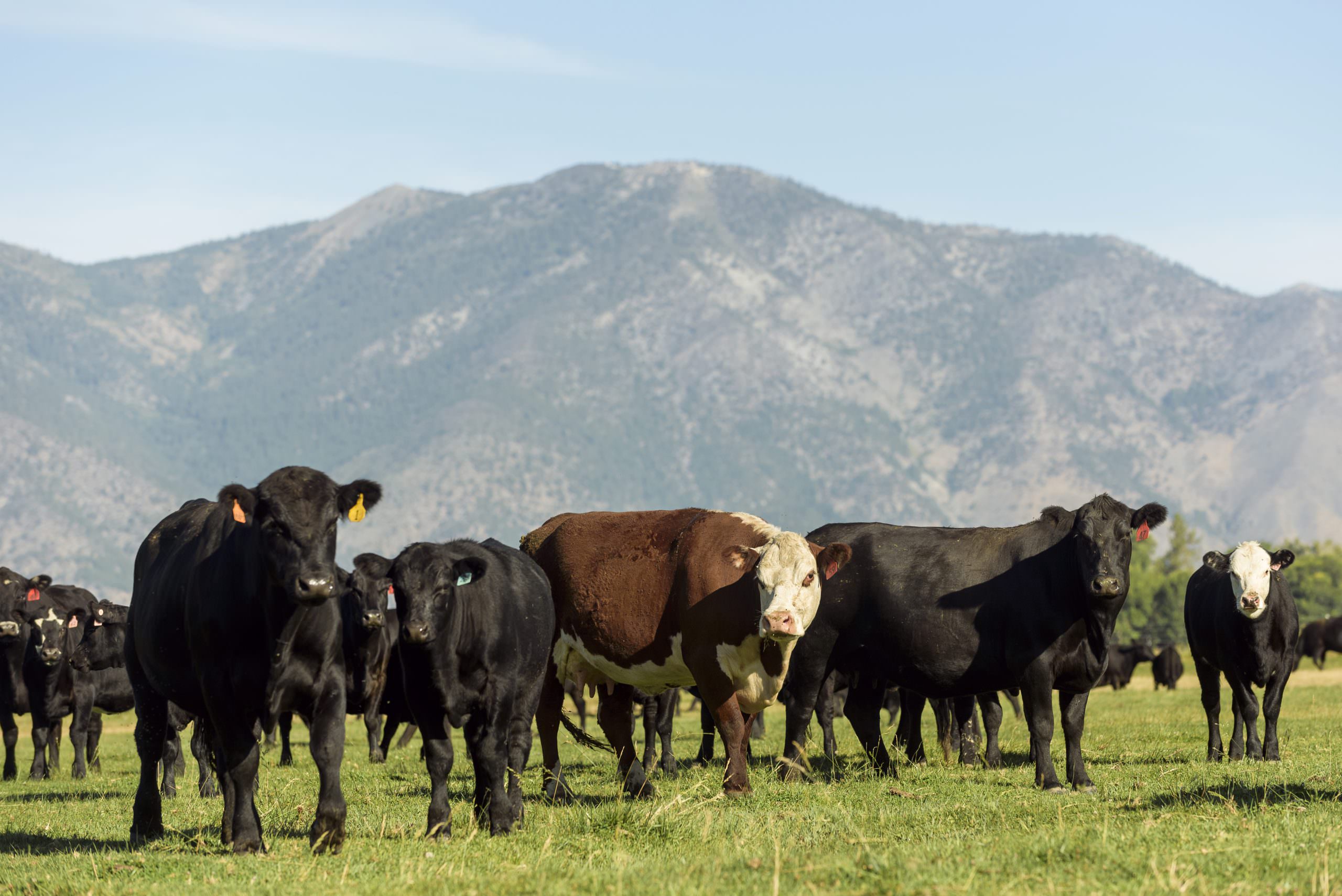
Mack Land & Cattle raises registered Angus and Angus-cross cattle on about 700 acres in Minden
First-timers, old-timers
As the oldest recorded and continuously operating, family-owned ranch in Nevada, the 430-acre Cushman-Corkill Ranch in Fallon also was one of the first ranches recognized by the centennial program. Purchased in 1861 by Josiah Cushman, the ranch has produced cattle, corn, potatoes, Sudan grass, and small grains for generations.

Brian Parks holds a plaque entailing the history of his family ranch
“That designation is really just by the fickle finger of fate,” says Mary “Bunny” Cushman-Corkill. “Some of the ranches in Genoa and other areas are older, but some of them have been sold off in the past, so we got that title by default.”
Cushman-Corkill has worked with the program to make sure century-old ranches and farms in the area are aware of and receive recognition. Her ancestral home also is a physical representation of the challenges these ranches have faced in the past and what they now face. Storms and drought are not the only tests. Development, increasing overhead costs, and taxes also threaten these established ranches and farms.
Cushman-Corkill family members worked with the Nevada Land Trust to secure funding for a conservation easement to preserve their property as a working ranch and protect it from development. This is one of several land conservation options offered by the Nevada Land Trust to keep ranches and farms running and successful.
“We’re just stuck in it, and we’ve never been able to afford to leave, but it’s a wonderful way of life,” Cushman-Corkill says. “My husband and I were both raised on ranches, and we raised our children on one. When you grow up with life and death and dirt, you gain common sense, which is something that’s lacking in America these days. It also all boils down to Mother Nature’s whims. No matter how smart you think you are, she deals the final deck. I have no idea what the future holds, but it’s love for what you do that keeps us going.”
Another ranch awarded at the beginning of the program was Mack Land & Cattle in Minden. Established in 1858 by H.H. Springmeyer, who originally came from the Westphalia area of Germany, the ranch now is run by current owner Brian Parks. In this small world, Parks’ grandmother happens to be Mary Cushman-Corkill’s cousin.
“Ranches raised a little bit of everything when they first started in the Carson Valley, but over time cattle dominated,” Parks says.
Mack Land & Cattle raises registered Angus and Angus-cross cattle on about 700 acres. The original ranch had more than 12,000 acres and was farmed by Springmeyer’s 10 sons and two daughters. The large number of family members meant that each son would own 1,000 acres for his own use (at the time, daughters couldn’t own land). According to Parks, this is a main reason the ranch stayed in the family for so long.
Unlike a century ago, the biggest challenge Parks faces today is difficulty finding help. In the 1800s, a large ranch could accommodate multiple employees, in exchange for work, in bunkhouses. These days, Parks owns rental property, the income from which pays for better equipment and technology to replace human labor.
Being that he’s so close to the fast-growing Carson Valley, the selling off of portions of the ranch for housing and development is another fact of life. But Parks plans to stay put on his corner of the historic ranch.
“There’s a reason I still do what I do,” Parks says. “It’s a peaceful existence, even if I’m only half a mile from town.”
Another 19th century ranch and farm is the Snyder Livestock Co. and Snyder Family Farms. Established in 1892 in Mason Valley near Yerington by Charles Snyder, the ranch currently is run by 93-year-old Eddie Snyder, his wife Theresa, and several of their 10 children. They received their centennial award in 2005.
Tales of Snyder ranch’s founder range in subject matter from his mining and timber endeavors in Bridgeport, Calif., before coming to Yerington, to those of more mythological status.
“Legend has it that Charles came across the ocean, walked across the Isthmus of Panama barefoot, and then caught a ship to San Francisco,” Eddie Snyder says.
The Snyder Livestock Co. has been producing beef for more than 50 years and operates a feedlot for purebred cattle on 252 acres. Bulls are tested, vaccinated, and photographed for auction and sales; heifers are tested for ovulation and custom bred. Under the name of Snyder Family Farms, the family also grows onions, garlic, and hoop-house vegetables such as watermelon.
A challenge that the family runs into now that didn’t affect Snyder ancestors is identifying and taking care of sick animals.
“It seems like these days there are more diseases — and more cures, of course — but these diseases have developed because of the way cattle are moved around,” Snyder says. “Cattle trucks are incubators for disease, and the auction saleyard is a festering point for diseases as well.”
Even with the challenges of running such a large operation, the pull of the land keeps the Snyders deeply rooted to their home.
“We are successful because my heirs wanted to be here,” Snyder says. “They knew how hard the work was and the rewards were not that significant, but they chose that lifestyle. All my children went to college, but I wasn’t trying to build a legacy or anything. I just enjoyed what I was doing.”
The next 100 years

Members of the Buchanan family of Martin Ranch near Eureka, Nev.
While these homesteads were established by some hardy folks, the next generation holds the key to their survival. This generation’s plan include fragments of the traditions that made the ranches great along with some contemporary aptitudes.
Vickie Buchanan of the Martin Ranch in Monitor Valley near Eureka comes from a line of “tough old bird” ranchers, including several tenacious women. The Martin Ranch (originally the Antelope Valley Ranch) was established in 1887 by Irish immigrants James and Agnes Morrison. On her solo trip across the states, Agnes intended to go to Eureka, Calif., but took the wrong train to Eureka, Nev. The mistake didn’t deter her. She fell in love with a man and the land and got to work. Buchanan’s grandmother, Elizabeth Martin, ingrained the Martin name into the current ranch and lived to be 93 years old.
“She pretty much single-handedly homesteaded this part of the ranch that we are on today,” says Buchanan, who now partners with her mother, Ruth Martin, as co-owners of the ranch.
The off-grid ranch presently has several hundred head of cattle and hay crops, and the family raises livestock and vegetable gardens for their own consumption. The Martin Ranch received its centennial award in 2013.
“We try to stay as self-sufficient as we can,” Buchanan says. “It’s a labor of love, but the goal is not to get too big and take on too much debt. You can only do what you can afford to do at a time.”
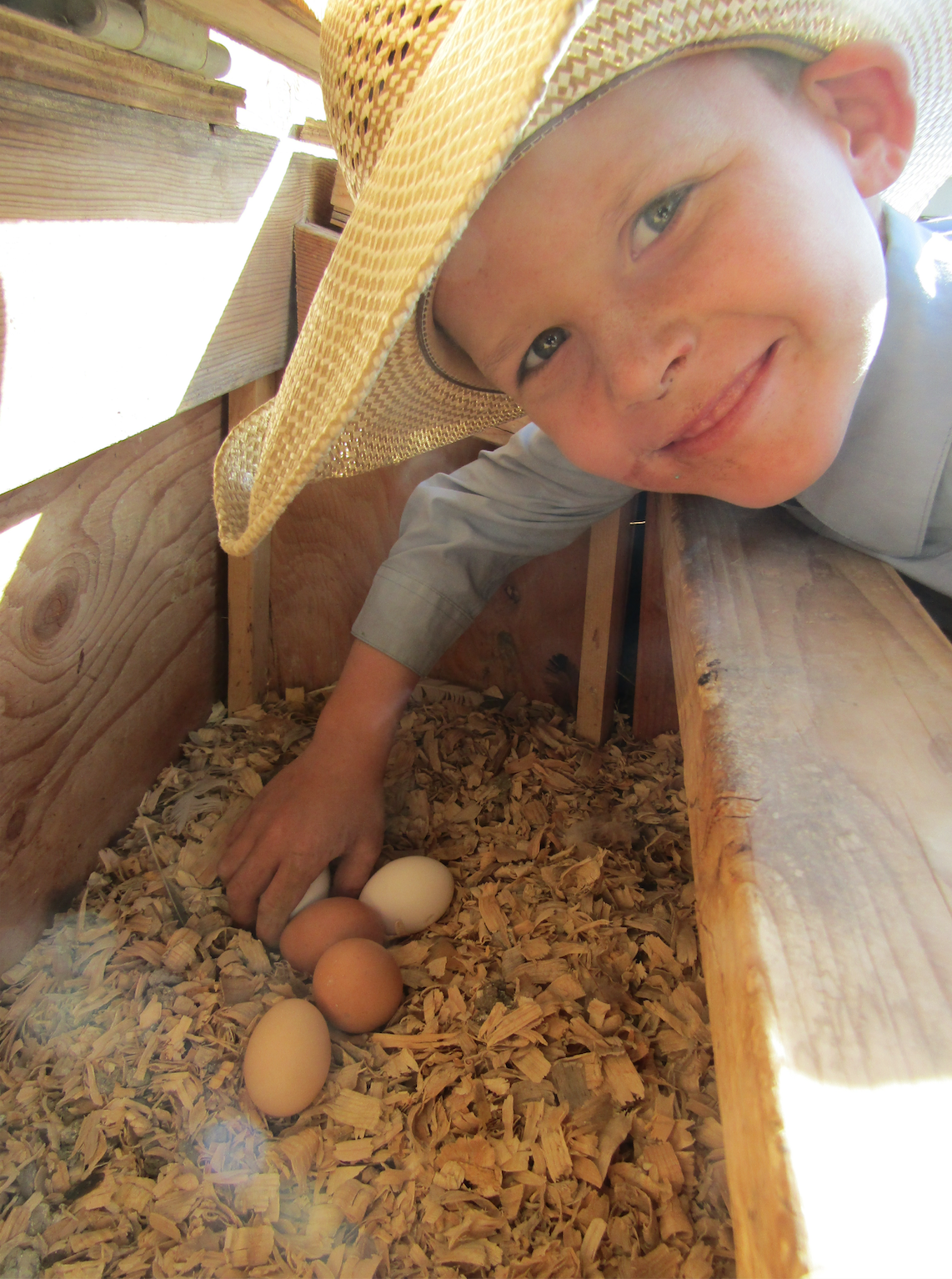
Frank Buchanan, 7, collects eggs at Martin Ranch near Eureka, Nev.
While the family keeps with ancestral traditions, its members also are diversifying by heading into the bed-and-breakfast and camping business. The ranch offers a campground for tents and recreational vehicle and horse-trailer parking. The original cowboy bunkhouses are available for rent, as well as some wall tents with cots and a cookhouse. Buchanan also offers catered meals for guests and visiting hunters.
“We want people to come out and experience what life was like 100 years ago,” Buchanan says. “We want guests to see that you don’t have to have the big city infrastructure; you don’t have to have power. You can still survive the way people did 100 years ago. We want people to get out here and disconnect.”
The Frey Ranch Estate Distillery and Churchill Vineyards in Fallon are situated on another long-running ranch that is adjusting to the times. Known more for its wine, gin, and vodka than for cattle, Frey Ranch actually has been growing the grains needed for its distillery for 150 years.

Colby Frey runs the 1,400-acre Frey Ranch in Fallon
Colby Frey currently runs the 1,400-acre ranch. He says his family wanted crops that would use less water and have been growing grapes, barley, rye, corn, and wheat in rotation for generations. The yields go into the estate’s award-winning spirits, and the byproducts are sold to Storm’s Oasis Dairy, next door to the ranch. The popular products and related publicity have expanded the Frey name and livelihood while promoting Fallon and Northern Nevada.
“On a ranch, there are such tight margins everywhere, and you can’t afford to justify the cost of equipment over small acreage,” Frey says. “Land prices are so valuable that if I bought this place for market value today, I couldn’t even make the first payment. I’m fortunate because of my family, that my father sold it to me as a business rather than for market value. Without my family’s past and history, there’s no way I could be doing what I’m doing now.”
The original ranch was started by Lorenzo Frey in Genoa in 1854. Frey came from the Alsace-Lorraine region, then of Germany, and grew food for the miners of the Comstock Lode in Virginia City. Lorenzo’s son, Joseph Frey, married another spunky pioneer woman, Ethel May Peckham, who happened to be on the University of Nevada’s first women’s basketball team in 1899. The ranch later moved into Reno and then to Fallon in the 1920s.
Because the Frey Ranch has not been operating in the same location for a century, it is not yet eligible for the Nevada Centennial Ranch and Farm Award. However, the main house on the Fallon ranch was listed on the National Register of Historic Places in 1999, and this year the family plans to have a 100-year party for the house.
The degrees of separation for many of these original families are few. In 1909, Lorenzo Frey actually sold his Genoa ranch, Ranch One, to Robert and Sarah Trimmer, the ancestors of current owner Lisa Lekumberry (Lisa is the wife of J.B. Lekumberry, who co-owns J.T. Basque Bar & Dining Room in Gardnerville with his sister Marie. See related story in Chef’s Table.[JS1]). When Nevada was still a territory, Ranch One actually was the first recorded land claim in 1852. Exactly 100 years later, in 2009, Ranch One received its centennial award.
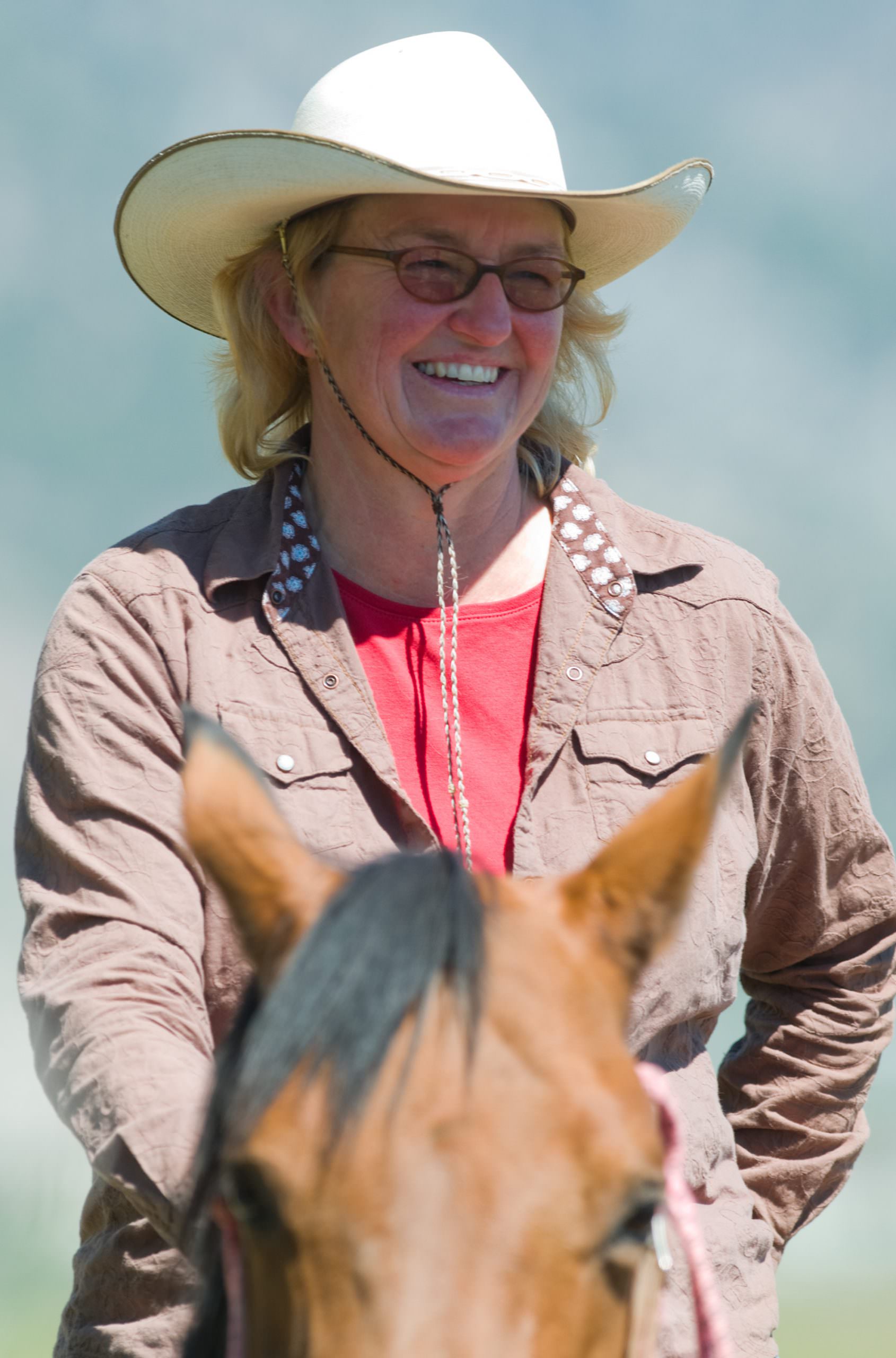
Lisa Lekumberry owns Ranch One in Genoa
On about 280 acres, Lekumberry and her family raise natural, grass-fed Hereford and Angus beef cattle. The ranch also is starting to raise Devon cattle. Lekumberry tells stories about her mother being born in the original 1885 ranch house and the mischief she and her sister (Lekumberry’s aunt) got into.
“One thing they liked to do was get onto the front porch roof that was accessible out the bedroom window, until one day a neighbor caught them and my grandma nailed it shut,” Lekumberry says.
As with the Frey and Martin ranches, the Ranch One family owns a variety of additional businesses, including the Trimmer Outpost store in Genoa (known for its Nevada-shaped beef patties), the J.T. Basque Bar & Dining Room in Gardnerville, and its 1850s barn, which it rents out for special events.
Similar to the Cushman-Corkill ranch, the Lekumberry family has taken an extra step to protect its property. The family purchased a conservation easement from the Bureau of Land Management to keep its land assessed and conserved for agriculture and grazing use. In an area that’s desirable for a growing population, this helps to hold back encroaching development.
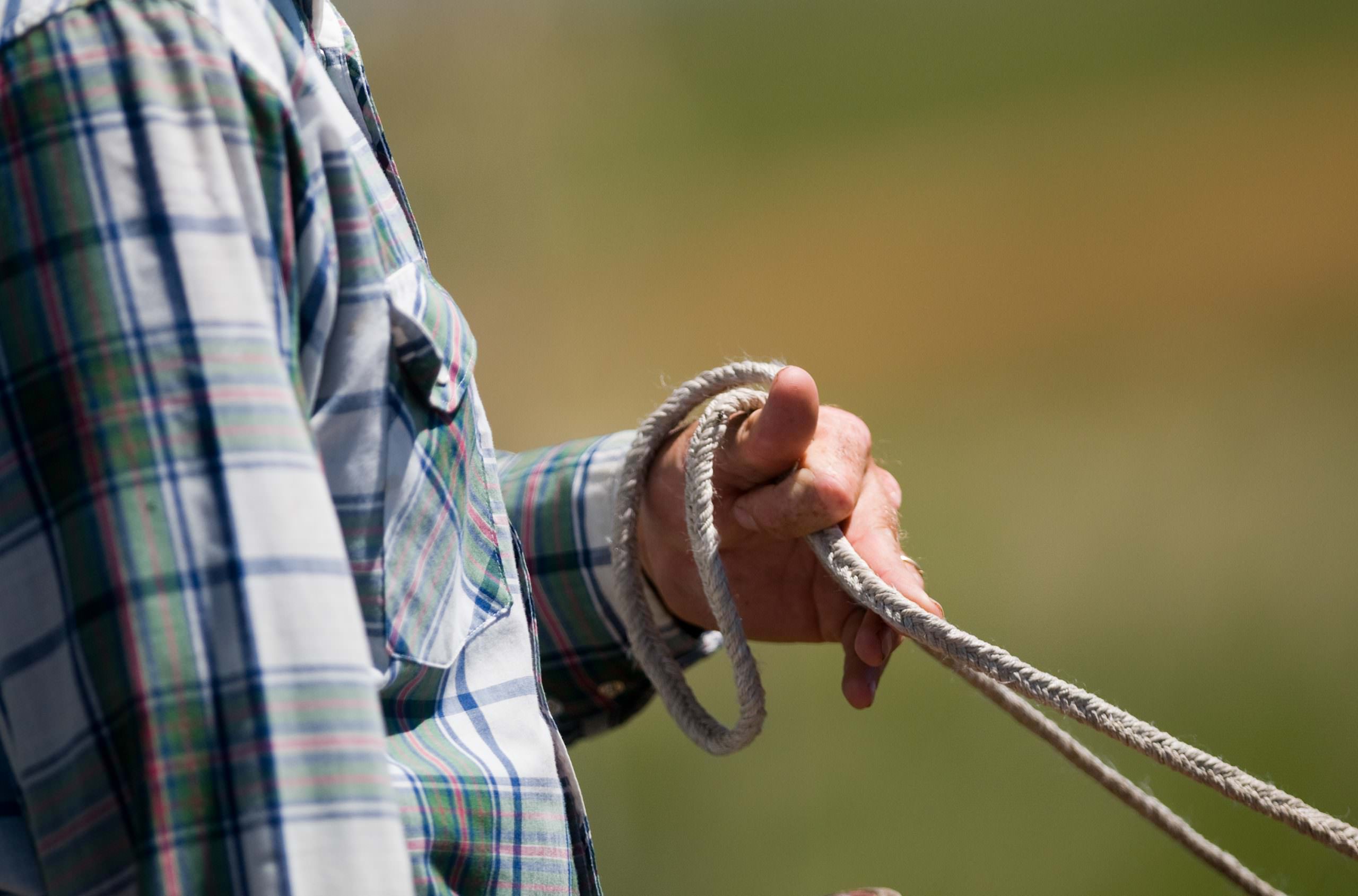
An employee at Ranch One reins in a horse on a cattle drive
Anna Lekumberry, Lisa’s 22-year-old daughter, has a spark of that spunk that fueled those original pioneer women.
“My mission in life is to educate and be aware about what happens when all you have is houses. Where are you going to get your food?” she asks. “People are so far removed from the ranch and basic instinctual things such as how you preserve the food you grow in your garden. It’s an ongoing struggle, but we do like to remember that we are living in a house from 1885, and I get to work out of my grandparents’ house. I want to pass that on when I do have kids. There’s just something about it. It’s unique.”
Christina Nellemann is a Nevada native, but has nowhere near the legacy of these hardy ranch families.
RESOURCES
For details on the Nevada Centennial Awards Program, visit Agri.nv.gov/outreach/nevada_centennial_awards_program
Mack Land & Cattle
Find Mack Land & Cattle Company on Facebook.
Snyder Livestock Co.
Slcnv.com
Snyder Family Farms
Snyderfamilyfarms.com
Martin Ranch
Martinranchnv.com
Frey Ranch Estate Distillery
Freyranch.com
Ranch One
Trimmeroutpost.com
Nevada Centennial Awards Program
Since the program started in 2004, 49 families have been recognized and awarded with metal signs, each printed with the farm or ranch’s name, its date of establishment, and a photo of the ranch. The families also receive recognition within the agriculture community at events and in publications.
The awards are sponsored by Nevada agriculture license plate funds, the Nevada Farm Bureau Federation, Nevada Agricultural Foundation, Nevada Department of Agriculture, Nevada Cattlemen’s Association, and the USDA Natural Resources Conservation Service. This year the awards ceremony will be held at the Nevada Cattlemen’s Association Annual Convention and Trade Show, Nov. 15 – 17 at the Winnemucca Convention Center.
To qualify as a Nevada centennial ranch or farm, the operation must have belonged in a family for at least 100 years and be a working ranch or farm with a minimum of 160 acres. If fewer than 160 acres, the ranch must have gross yearly sales of at least $1,000. A proof of settlement must be provided; this may be a copy of a deed, newspaper article, or historical document showing the date of establishment or residence. Any Nevada farm or ranch that applies and meets the qualifications can be recognized. For details, visit Agri.nv.gov.
Read about the 2018 inductees here
RECIPES
Albert’s Cornbread
(courtesy of Vickie Buchanan, co-owner, Martin Ranch in Monitor Valley. Serves 10)
This cornbread recipe has been passed down from Vickie Buchanan’s grandmother, Elizabeth. It has become a breakfast staple at the Martin Ranch and is served with butter and syrup, such as pancakes.
“I use this recipe for winter mornings before school, when the family is coming home from hunting trips, and for Sunday morning breakfasts. We all love it!” Buchanan says.
1½ cups all-purpose flour
⅔ cup sugar
½ cup yellow cornmeal
1 tablespoon baking powder
½ teaspoon salt
1¼ cups milk
2 large eggs, lightly beaten
⅓ cup vegetable oil
3 tablespoons butter or margarine
Combine all dry ingredients together in a bowl and mix with all wet ingredients. Pour mixture into 8-inch greased baking dish. Bake at 350 degrees F for 30 to 35 minutes or until toothpick or knife inserted into middle comes out clean.
Grandmother Trimmer’s Chicken Fried Steak
(courtesy of Lisa Lekumberry, owner, Ranch One in Genoa. Serves 2)
“This recipe is from my English grandmother, Annie Twaddle Trimmer. She would serve it with mashed potatoes and green beans in the winter and fresh tomatoes in the summer.”
1 pound of ½-inch-thick cubed beefsteak, cut into 2 pieces
¾ cup flour
½ teaspoon salt
¼ teaspoon pepper
1 egg, beaten
1 tablespoon milk
2 tablespoons cooking oil
In a shallow dish, combine flour, salt, and pepper. In another shallow dish, combine beaten egg and milk. Dip meat into egg mixture, then coat with flour mixture.
In 12-inch skillet, cook meat in hot oil over medium heat for 10 to 15 minutes per side. Remove and keep warm.
For gravy
1 tablespoon onion, finely diced
2 tablespoons butter
2 tablespoons flour
1⅓ cups milk
½ teaspoon salt
¼ teaspoon pepper
Cook onion in reserved oil and meat drippings 5 minutes or until tender. Add butter to pan and melt. Stir in 1 tablespoon flour until thickened. Add additional flour if needed. Gradually whisk in milk, salt, and pepper. Cook and stir over medium heat until thick and bubbly, and cook 1 more minute. Serve gravy over meat.
Frey 75 Cocktail
(courtesy of Frey Ranch Estate Distillery in Fallon. Serves 1)
1 ounce Frey Ranch gin
½ ounce juniper-berry-infused simple syrup (recipe below)
Juice of ½ fresh lemon
Bottle of Aureole Cuvée or your favorite brand of Champagne or sparkling wine
1 sprig fresh rosemary
1 sprig fresh basil
Pour ½ ounce juniper-berry-infused simple syrup into a Champagne flute. Add gin and fresh lemon juice. Fill glass with Champagne and garnish with sprigs of rosemary and basil.
For juniper-berry-infused simple syrup
1 tablespoon juniper berries, crushed
1 cup sugar
1 cup water
Combine all ingredients in small pot. Bring to boil and let simmer 15 to 20 minutes. Remove from heat and transfer to glass bowl. Allow syrup to steep in refrigerator for at least 4 hours. Strain mixture to remove juniper berries.
